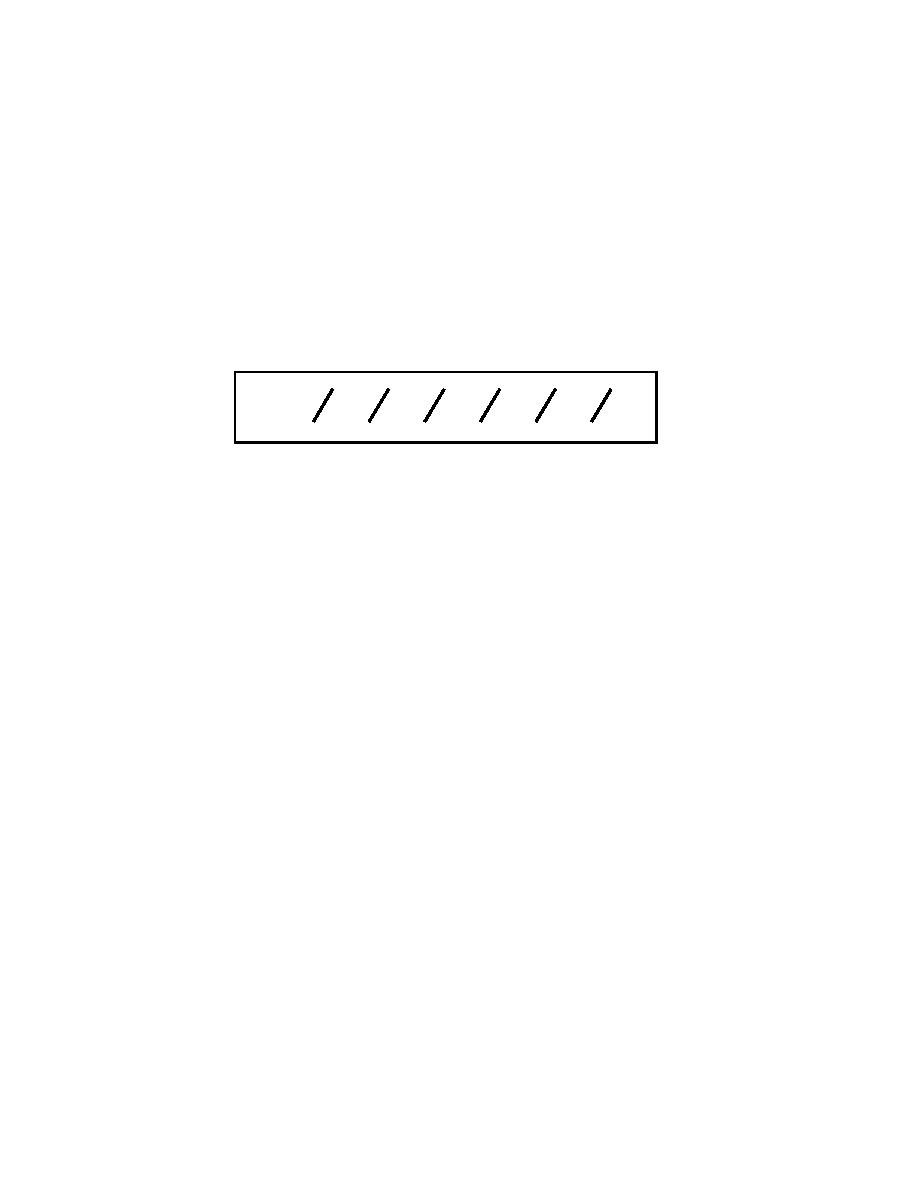
Formula Components. Figure 2-1 shows the specific components of the formula.
2-1.
They include the following:
Route width.
Route type (X, Y, or Z).
Lowest MLC.
Lowest overhead clearance.
Obstruction (indicated by OB), if present.
Snow blockage (indicated by T) or flooding (indicated by W), if present.
70
Y
30
4.6
OB
T
W
Figure 2-1. Route Classification Formula
a.
Route Width. The first item of information recorded in the route classification
formula is the route width. The width of the route is the narrowest width of the traveled
way expressed in meters. This measurement will include bridges, tunnels, roads, and other
constrictions.
Route widths are illustrated in Figure 2-2. The width of the traveled
(1)
way determines the number of lanes of a given route. The number of lanes determines the
traffic flow.
(2)
A route is single flow if it allows a column of vehicles to proceed and
individual oncoming or overtaking vehicles to pass at predetermined points. A route is
double flow if it allows two columns of vehicles to proceed simultaneously, either in the
same or opposite direction.
(3)
A width obstruction does not exist for military traffic unless the
traveled-way width is less than the minimums outlined in Figure 2-2. To obtain the
minimum required traveled way, compare the type of traffic and the required traffic flow.
(4)
In the absence of other instructions from the commander requesting
the reconnaissance, routes are reconnoitered and reported based on the minimum traveled-
way width for double-flow, tracked vehicles.
(5)
Any time the traveled-way width is less than minimum for traffic type
and flow, the traveled way presents an obstruction to traffic. This will be reported as an
obstruction.
EN 5621
2-2



 Previous Page
Previous Page
